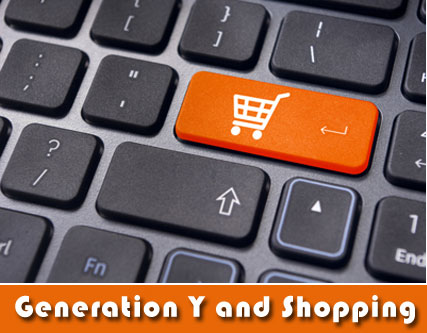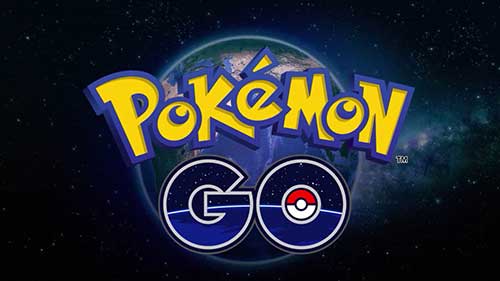Online shopping is constantly evolving and growing after several decades of operation
E-commerce is constantly evolving and growing after several decades of operation. Today we don’t think of it as a big deal, but what was it like when it first came about? It may seem like online shopping has only been around for the last ten or so years, but were you aware that it actually came about in the late 1970s.
Originally e-commerce, which includes online shopping commonly known was set up for communication between customers and businesses. It evolved considerably since then.
If you’re Generation Y or older, you’ll probably remember the impact Napster had on the music world in the late 90s. Napster was a company which owned a music file-sharing website, where people could transfer music saving them the need to go to a physical store and buy a CD, or in that time, a cassette as well. Napster revolutionised the way people interacted with their music and paved the way for other businesses to enter the e-commerce market. Napster had broken down the barrier between the idea of online shopping and people actually being willing to do so and seeing the benefit in doing so. The immediate benefit in Napster’s case was that people could buy individual songs instead of full albums, which enabled them the opportunity to only buy the music they wanted, without buying what are commonly known as album fillers.
Over time, people’s willingness to conduct business online changed, and in the 1990s, online banking was introduced into Australia. It looked very different to what it does today. People would take a floppy disk and install software on their computer which gave them the option of checking their balances and making transactions. Unlike today, where internet banking is free, there was a considerable cost involved.
Below Commonwealth Bank’s first website, courtesy of research company, Canstar.
 Source: http://www.canstar.com.au/online-banking/history-of-internet-banking/
Source: http://www.canstar.com.au/online-banking/history-of-internet-banking/
Today their website looks dramatically different.
Source: www.commbank.com.au
The site has significantly advanced features and more than half of people have used internet banking in the last year. People’s willingness to embrace e-commerce goes further than that. They’re also willing to conduct their internet banking on their mobile phones when they’re on the go.
Of course, e-commerce isn’t just about banking. It’s also about online shopping. According to the Australian Bureau of Statistics 56% of Australian internet users had used the internet to make a purchase. This was in 2009. That number today would be much greater.
That provides a huge opportunity for businesses to capitalise on a completely new market that they previously didn’t have access to. Online shopping allows people to make purchases at a time that is convenient for them. They are not limited by traditional opening hours. If they’re unable to leave their home or live in a rural area, they’re not limited by geography either. They can purchase from stores in other locations, which gives them more choice. Online shopping has enabled people access to international retailers. The impact of that has been dramatic. Retailers such as Sephora, Zara and H & M have entered cities in Australasia as a direct result of that online shopping behaviour. Those retailers can then save on freight charges, and consumers benefit from having their favourite stores in their own backyard.
Of course, on the flipside, while it’s great for international retailers who want to expand, it’s not so good for local retailers who don’t have the capacity to expand. They face increased competition and that has hurt their bottom line, and in some cases led to store closures. A recent example of a retailer which floundered was Dick Smith Electronics. They had been in the market since 1968, and after 48 years of operations closed their doors earlier this year because they couldn’t compete with online prices and competition. Changing technologies had rendered many of their products redundant and they’d failed to establish themselves in a new niche.
To a lesser degree, department stores like Myer, David Jones and banks have also closed stores and branches because more and more business is being conducted online. Although this is generally a good thing for consumers, the downfall is that people are losing the human element of shopping and they are not seeing items prior to purchase.
Another impact of the emergence of e-commerce is that everyone thinks they can set up a store and be successful. They’re under this illusion that they’ll have access to a huge market. The reality is somewhat different though. There is only so much money in the economy, so with more and more players in the market competing for the dollar, it is harder to get a share of the pie.
Of course, online shopping and e-commerce opens a raft of possibilities for consumers and innovative businesses, and they can take the opportunity, but they need to be aware that they need to market their products and services more wisely and that competition is much greater than it was when there were only bricks and mortar stores to compete with.
How to market to consumers online when loyalty is difficult
 For years, all we heard about was Generation Y and how we needed to market to them. Of course, it’s been about a decade now and a new generation has emerged, Generation Z, and like every generation before them, they are harder to market to. Retailers, especially online retailers much approach them differently to how other generations have been approached.
For years, all we heard about was Generation Y and how we needed to market to them. Of course, it’s been about a decade now and a new generation has emerged, Generation Z, and like every generation before them, they are harder to market to. Retailers, especially online retailers much approach them differently to how other generations have been approached.
The difference between Generation Z and other generations that came before them is that Generation Z has greater access to mobile phones and the internet. That is the first problem.
With greater access to the internet and technology Generation Z has more choice at their disposal. If they don’t like the stock in one store, they can simply look online for another clothing store or electronics store. The possibilities are endless.
Increased choice also means that they can simply go to a new retailer if they don’t like what’s on offer.
Loyalty programs no longer work. There is so much choice available. Generation Z, despite their infatuation with social media, does not want to hand over their details to retailers to be mass marketed to. Traditional techniques don’t work. Basically, if it doesn’t make their life easier, or could complicate their life in any way then they don’t want to know about it.
Generation Z is heavily influenced by what their peers say. If a product has a bad review online then that is really hard for a retailer to come back from, even if they discount it to counteract the negative review. It poses a real challenge. Retailers, or any business for that matter, has always needed to work hard to maintain their customer base, however, when people can share their negative experience just as fast as it took place, retailers really need to work to keep their customers happy.
One bad review can undo months, or even years of hard work and this generation isn’t quick to forgive. Although they don’t place emphasis or value on loyalty, they do want to be able to trust their retailers. In an age when governments can’t be trusted that is even more important for Generation Z.
This behaviour has partially been shaped by the time in which they grew up. Unlike Generation Y, which grew up in a relatively good economic climate, Generation Z has grown up in a recession and it being much harder to obtain employment. These events mean they are less likely to part with their money than other generations. They want to know that what they’re buying is good value and that they will not end up worse off if they buy the product.
That could be through interactive promotions, similar to Pokemon Go! Many cafes, across the world, capitalised on the trend by offering Pokemon Hot Spots. They were seen as hip and cool and gained access to customers they otherwise wouldn’t have had access to. Retailers need to think outside the square and be quick to respond to and anticipate the next trend.
At the moment the Olympics are on, so it would be worthwhile for online retailers to offer promotions related to the Olympics. Businesses need to keep up to date with what is going on in the world otherwise they’re going to be left behind and will be perceived as not knowing what they’re doing. Generation Z is less forgiving of that type of behaviour than other generations.
The biggest difference for retailers is that unlike previous generations, Generation Z is the first who truly has the world at their fingertips. They can literally access every single product in the world at the tap of a phone and know the best price, the most popular trend. No other generation before them has grown up like this.
In a nutshell, if you want to appeal to Generation Z you need to:
1 – Follow current trends.
2 – Tell the truth and be honest.
3 – Ensure that you have positive reviews. That means you will need a web presence. Basically, if you don’t have an online presence you might as well not exist. If you can’t be Googled then how will people know you’re legitimate?
4 – Don’t bother with loyalty programs. Generation Z doesn’t have the patience for them. They want convenience rather than annoying cards and other monitoring material.
5 – Offer value for money.
If you follow these tips then you are sure to win the hearts of Generation Z and successfully sell to them online or in a physical store.
Craze of Pokemon and How its changed How people use Technology
You would have to have been living under a rock the last couple of weeks not to know that the Pokemon craze is sweeping through the world. Australians have embraced the phenomenon with thousands of people arranging to meet up to play the game. The aim of the game is exactly like the 90s TV series – to catch all the Pokemon you possibly can. And some people are actually getting pretty obsessed. The Pokemon game has been primarily embraced by two generations, Generation Y which we talked a bit about in our previous blog (Link will go here) and Generation Z who was born in the late 90s.
So what are the differences between Generation Y and Generation Z?
Well to sum it up briefly, Generation Y was the last generation that would remember a life without mobile phones. They were used to playing outside and rocking up to their neighbours’ houses rather than texting or calling to check that it would be okay to go over.
Generation Z, on the other hand, is very much a digital generation and they’ve grown up with computers so didn’t have to play outside as children which have caused health problems such as obesity.
Pokemon Go embraces both old and new technologies, or behaviours would be a more accurate description. In the 90s it Generation Y wanted to play video games their parents would ensure they had time to play outside. The video games were much different too and less interactive.
One such game was Alex the Kidd on Sega Master Systems. Sega Master System was the 80s and 90s video game console where you inserted a cartridge. It was then connected to your television.
Alex the Kidd was a hugely popular game which peaked in the mid-90s. The idea was that when you were playing Alex you would batch items known as Baums. Alex was 14 and everyone loved the game.
The next console released by Sega was the Mega System and it wasn’t as popular because times had changed. It was released in the late 90s by which time Nintendo was gaining ground again and Sony was about to release the first PlayStation.
Around this time a new television series, Pokemon was released and was popular for ten years. Like all animated shows, there were the good guys and the baddies, and the object was to catch as many goodies as you possibly could.
 Fast forward a few years to the early 2000s and mobile phones now have widespread text capabilities so are embraced by teens. The now defunct Nokia set the trend for mobile games with the inclusion of what was known as Snake. Other manufacturers followed but it wasn’t really until Apple founder Steve Jobs created the iPhone (which I am typing this blog on) that the full functionality of phones could be achieved.
Fast forward a few years to the early 2000s and mobile phones now have widespread text capabilities so are embraced by teens. The now defunct Nokia set the trend for mobile games with the inclusion of what was known as Snake. Other manufacturers followed but it wasn’t really until Apple founder Steve Jobs created the iPhone (which I am typing this blog on) that the full functionality of phones could be achieved.
Of course, the downside to this is that people use their mobile phones in a solitary way. They are so engrossed in their own activities that they don’t see what’s going on around them. They’re always looking down at their phones.
Pokemon Go! Which was released a few weeks ago on Android and iOS have been embraced by people of all ages so much so that it’s actually changing the way people interact with their mobile phones.
The Pokemon Go! The game requires people to go to specific locations, predetermined locations where they will meet with other players and compete to catch them all. Aside from the fact that some people have gotten into trouble and been injured or gone onto private property the game is actually a really great idea.
It gets people outside and instead of being glued to their screens with little human interaction. This is because although you play on your mobile phone and use data, you need to be around other users for the game to work effectively. Pokemon Go! Won’t work if you’re at home. There won’t be any Pokemon to catch, other than the one that you get when you first download the game.
People are also getting exercise that they otherwise wouldn’t get because they are so engrossed in their technological devices, so Pokemon Go! has many benefits outside of the game itself.
Generation ‘Y’ and Shopping
 If your time is taken up with Facebook, WhatsApp, Amazon, the latest hit diet, Game of Thrones, your ambition and family then the chances are you belong to Generation Y.
If your time is taken up with Facebook, WhatsApp, Amazon, the latest hit diet, Game of Thrones, your ambition and family then the chances are you belong to Generation Y.
Generation Y was born between the early 80s and the early 90s. Every generation is different and when you were born affects the types of things you will be interested in. When you’re born also influences your shopping behaviour in terms of what you will buy and how you will make that purchasing decision.
Gen Y is different than other generations in almost every facet of their lives. Those that belong to the generation were educated differently, they have had a different upbringing and experience different culture and customs to that of others. People who are part of Gen Y want to experience different things and they are more confident than previous generations. They want to leave the nest as soon as they can to experience the world.
The decade that you are born in, as mentioned, influences your purchasing behaviour because of the set of values and expectations you were raised with. It is worth noting that there are individual differences and not everyone is the same. Although people do make some purchasing decisions based on arbitrary factors like age and gender, others are made based on intellect, choices and personal character. The reality is that it’s wrong to stereotype.
It isn’t appropriate to assume that every member of Generation Y is the same. Just like everyone has different hair and different political views, everyone’s attitudes are different as well, and Generation Y members have different habits. They can’t all be lumped under the same umbrella.
Although the term, Generation Y originated in America, it has been adopted by many countries and traits have been observed in Australia, Asia and Europe as well.
Although we can determine some traits on time of birth it can be more valuable to consider the motivations and tendencies of each generation. When we do so, we can better understand how and what motivates people to make the purchasing decisions they do. Their motivations determine how they choose their fashion, how to shop and their career etc.
It has been said that Generation Y is the largest consumer group in the US, however, if we look further afield to Japan and Europe Generation Y makes up a smaller portion of their market. The important thing to note here is that people are used to being sold to rather than given the chance to make choices on their own.
In the United States, a quarter of the population lives in a single parent family, whereas 75% has a working mother and a third do not consider themselves to be Caucasian. The reason this is relevant is that how someone is raised, both the environment and their family, determine what their shopping behaviour will be. That includes how they make decisions, where they will shop, what they will buy and how much they will spend. This is only scratching at the surface and. Further research is needed.
Every generation has been shaped by the world events that occurred when they were growing up and some of the events that may have shaped Generation Y are the following:
- Gulf War 1991.
- The Attacks of September 11th, 2011
- Indian Ocean Tsunami on Boxing Day 2003
- Hurricane Katrina.
- The Bali bombings
- Watching The Simpsons.
- Lord of the Rings and Harry Potter.
- Pokemon.
- PlayStation and Nintendo becoming more popular. Even earlier than that would be the Sega Master System followed by the Sega Mega System.
- Listening to Hip-hop, house and RnB (the modern version!) on your MP3 or iPod.
- Using the internet as a social device and embracing social media.
- Creating and reading blogs, and more recently vlogs on YouTube.
- YouTube, Myspace, Facebook, online shopping, MSN Messenger.
Gen Y is ambitious, narcissistic and has a very short attention span. They don’t care much for the convention so companies need to be innovative to keep up with them. Generation Y likes to do things their own way and they like to determine their futures.
They love sharing on the internet and are conscious of the value of consumer goods. They enjoy snapping up a bargain and using coupons and discount codes to save money. It is essential that online retailers cater their products and services to match their consumer audience. Before they purchase they are more likely to share the item on Facebook or Instagram and seek the views of their friends. They don’t want to make decisions on their own like previous generations did.
Despite being confident and despite having strong views based on world knowledge, Generation Y is still like other generations. They will care what others think and want to be liked.


